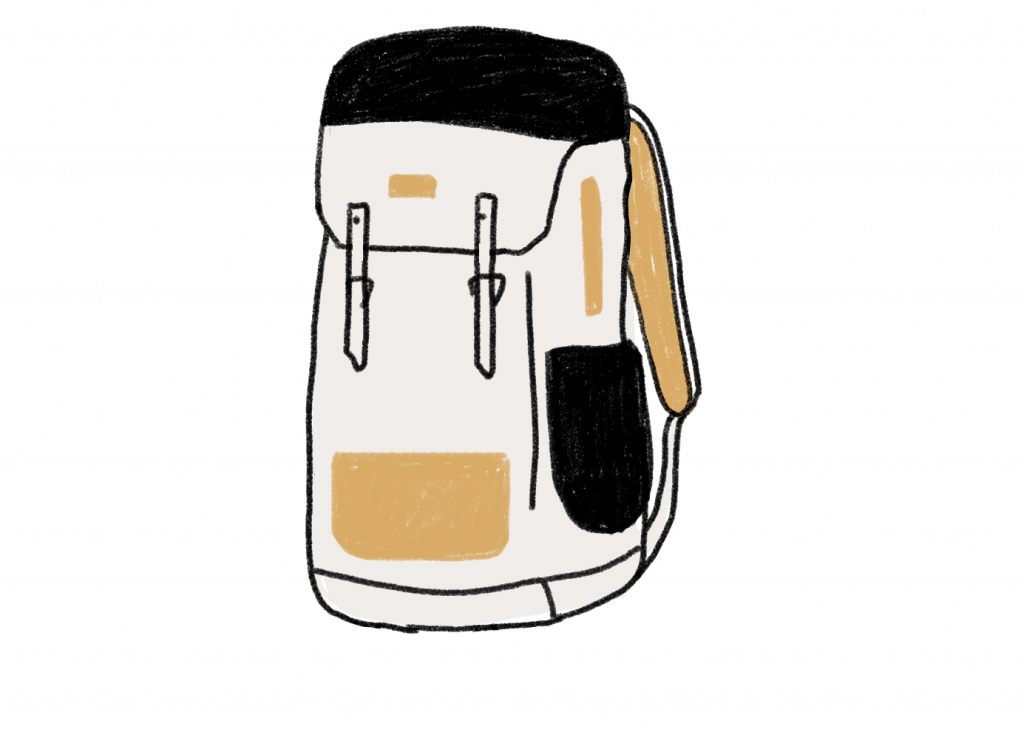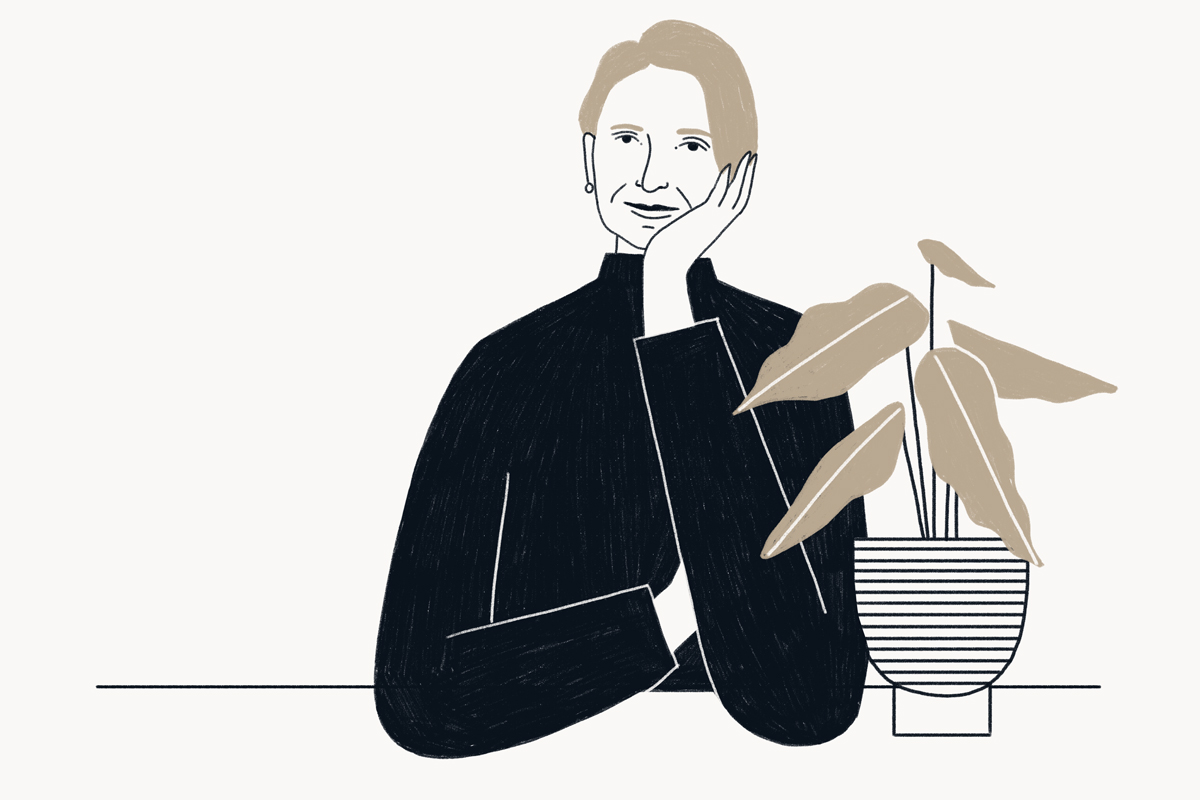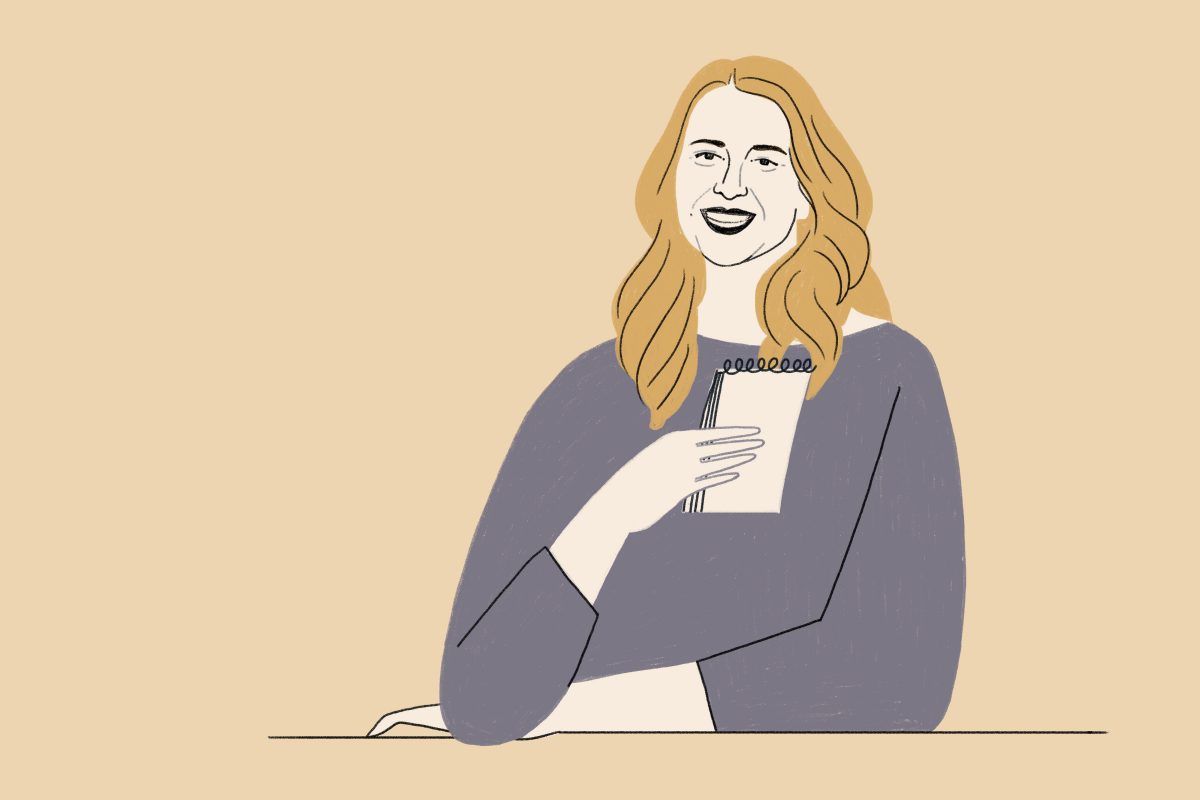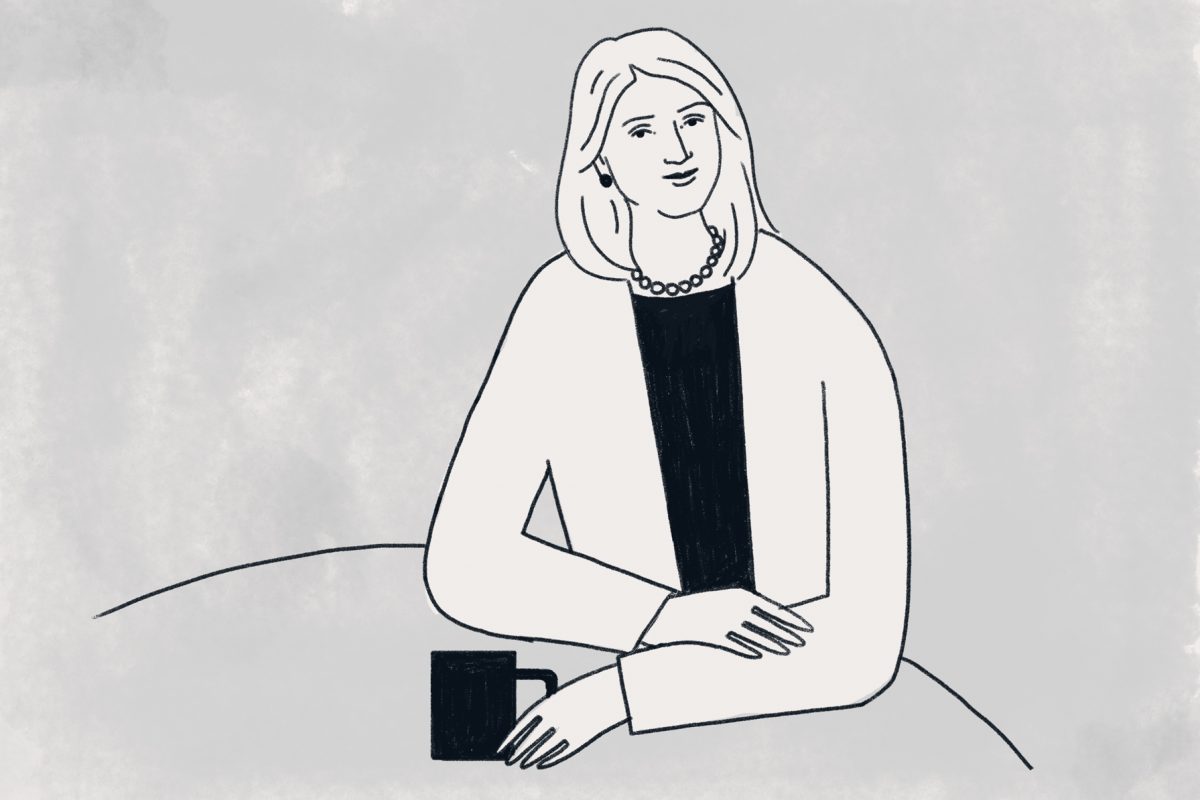Most people know Elizabeth Gilbert as the author of the brutally honest and massively popular memoir “Eat, Pray, Love,” a moving account of her spiritual journey around the world after a particularly devastating divorce. The book has sold more than 10 million copies since its publication in 2006, was turned into a movie starring Julia Roberts, and helped earn Elizabeth a spot on Time magazine’s 100 Most Influential People list.
But Elizabeth’s role in the culture transcends authorship. Committed to tackling fear and self-doubt, she helps others do the same through workshops, Ted Talks and more. Her 2015 book, “Big Magic: Creative Living Beyond Fear,” is a practical guide to doing just that. Her approach to work – and life – celebrates many of the same values as the KonMari Method™. Overlooking the California Redwoods, Marie and Elizabeth sat down together for a conversation on creativity, writing, tidying our homes – and lives.
In “Eat Pray Love,” you tell the story of leaving your life as you knew it and traveling around the world on a journey of discovery. Similarly, the KonMari Method™ advises people to embark on a “tidying festival” – an exercise of self-exploration and what your ideal life looks like. When you returned home from your travels, were there things you’d identified that sparked joy for you…and things that did not?
I actually did my tidying before I left. I got rid of almost everything I owned. By the time I finished, all I had left were the contents of a very small bedroom in my sister’s house, where she let me keep my most precious things. I traveled for the whole year with nothing but one backpack and I had a rule: when anything new came into my backpack, something had to go. I began creating a life that really looked like me, rather than looking like everything I had accumulated up until that point.
“Your home is a portrait of yourself.”
Is there something that you always bring on your trips?
I have a chanting book of my favorite prayers, Sanskrit prayers, that I learned at an ashram in India. It’s big and I never check baggage, so it’s a little bit unreasonable to bring in my carry-on, but this book is my home. It reminds me to be more than just my obligations. Wherever I am, I can sit down, open this book, chant these prayers, and know I’m home.
Do you have any other rituals when you travel?
Anytime I come to a new space, I have to unpack instantly, even if I’m staying only for 24 hours. I also pack light because it’s fast, and I get less confused. I remember being on a book tour three years ago and making a big mistake. I bought a giant suitcase and brought a lot of stuff. It was such a bad idea because all it did was make me confused. I’m much happier when I know that I only have a few outfits for each occasion – no uncertainty!

What about mornings?
The first thing I do is open the blinds to bring in the light. I always say hello to the morning. I’d be willing to bet that the first prayer that the first conscious human ever spoke was to say hello to the morning – the miracle that the light went away, and now it’s back! It’s a clean slate.
I feel that we’re very similar. I open the window and welcome fresh air into my house – and then I burn incense. I also pray and give thanks for my daily life.
One of the things I love about your work, Marie, is the way that you give a soul to all objects, which I’ve also always believed. I have a story related to this: When I packed to leave on my big trip, I laid out the remaining items and had a conversation with my clothes. To the items I was bringing, I said, “You’re coming with me on this journey because I know you will support me.” And then to the things that almost made it, I apologized. I folded them up and said, “Sorry, but you’re not coming.” I had to choose only the things that I knew would support me every single day for the next year.
“I had to choose only the things that I knew would support me every single day for the next year.”
You’re very honest about your fears and vulnerabilities in your work. This is refreshing, especially at a time when there is pressure, particularly for women, to be perfect and strong all the time. But acknowledging those fears and vulnerabilities can be hard. Do you find it difficult to be so honest?
I don’t mind talking about my struggles because I don’t think there’s anything to be embarrassed about. I feel very connected to the common difficulty of being a human. It’s a strange thing to be a person, and nobody knows how to do it. I don’t think there’s anything more interesting than talking about that.
I think that the more honest I am about my journey, the more connected I feel to everybody and their journeys. The more I reveal that seems really vulnerable and really private, the less private it becomes, because all I hear is a chorus of voices saying, “me too, me too.”
“If you’re too afraid to look into the scary attic in your mind, look into the scary attic in your home.”
Coming to the realization that “maybe this is not the life I want for myself,” can be a difficult process. Do you have any advice for people who want to come to terms with those difficult realizations? For example, the KonMari Method™ advocates the idea that going through your belongings can be a catalyst for realizing what matters to you.
My dear friend Martha Beck is a life coach and she has a great exercise: Think of the piece of your home that you dislike the most, the part that you don’t even want to look at. In my last house, that was the attic. I was terrified of it. Strangely enough, that was where I was storing all my papers and early manuscripts and books – my most precious things. There was also a hole somewhere in that attic where birds would get in and die, so it was filled with dead birds. It was the worst space. I had the door locked because I couldn’t deal with it.
In the exercise, Martha asks you to write down five words to describe that place. I wrote “haunted, terrifying, dangerous, shameful and toxic.” Then, as a way of getting to the part of yourself that feels those words, you clean that space. You do whatever it takes to make that space okay.
I was so afraid that I asked my closest friends to help. Together, the four of us tackled that attic. We took all of my writing to a storage facility so that I knew my papers were safe. We hired somebody to figure out where the birds were getting in. We wore masks and it was filthy work, but we cleaned out that space and repainted it. We opened up all the windows in that attic, lit candles and did a cleansing ceremony. Interestingly, within a month, I was divorced.
It was as though I was afraid to look into certain things. There were some things I didn’t want to know about. And they were behind the locked door, they were filled with dead birds. Once I cleaned up that space, I was able to feel what I needed to feel and see what I needed to see. You can’t do work on yourself and not do work on the space you live. And you can’t do work on the space you live and not do work on yourself. So if you’re too afraid to look into the scary attic in your mind, look into the scary attic in your home. It will be a portal, a doorway, that will take you into the parts of yourself that you’ve been afraid to look at.
“You can’t do work on yourself and not do work on the space you live. And you can’t do work on the space you live and not do work on yourself.”
Would you say that our home reflects our inner selves?
Absolutely. Your home is a portrait of yourself.
I move a lot, and I have never written two books in the same place. I really believe it’s part of my creative process. I just moved to a new apartment in New York. It took me less than 48 hours to put it together. There is not one thing in this apartment that doesn’t belong there, and it’s my new space for whatever the new project is. It’s almost like once I finish writing something, I have to go, because the spirit of that project has completely inhibited that house and no other project will be able to exist there. I often will build a new space for each project, and then go. It’s a complete cleaning out. I used to worry that it meant that there was something wrong with me, but I really think that it’s an essential part of my creativity.

I understand this completely.
I can’t say that I advise it for everybody, because it’s really expensive and disruptive, but so is creativity. Creativity is all about being willing to disrupt. Blow it up and start over. Try something new.
You and I are very similar. I usually move once a year. The longest my husband and I have lived in one house is a year and a half!
In the KonMari Method™, we encourage people to ask the question, “Does it spark joy?” to all areas of their lives. Is there a question or concept that you apply in making important decisions?
I always say this to women: “Start knowing.” I say it to myself, too. Enough of “Should I do this?” Go deep and say, “It’s time to know.” You have to believe that the force of knowing is in you. We’ve inherited it from our ancestors; they’ve passed on everything they went through. There’s an old version of you that lives in yourself. Ask her.
Often times I feel like the big changes in my life have come when the one in me who knows is appalled by the way that I’m living. She’s so angry. She just looks at the way I’m living and says, “No! This isn’t it! This isn’t good enough! This isn’t what we came here to do. We came here for better things than this.” I don’t mean not rich enough, not famous enough. I mean not accurate, not honorable enough for who you are.
That sounds like tidying sessions with my clients. When I visit their homes, sometimes the clients ask me, “Should I throw this away?” but I’m not the one to answer that question. I’m there to keep asking, “What do you think? What sparks joy for you?” and to help them develop their ability to come up with their own answers.
I want to thank you for bringing that concept into the culture because it’s absolutely radical. You’ve done this at a time when every measure of success in industrial, modern, capitalistic society has no mention of joy.
Joy has been my teacher and my deity for a really long time. Without joy, everything that you’ve accomplished and everything you have means nothing.
Thank you so much. We have different voices, but so much in common.
Thank you.






